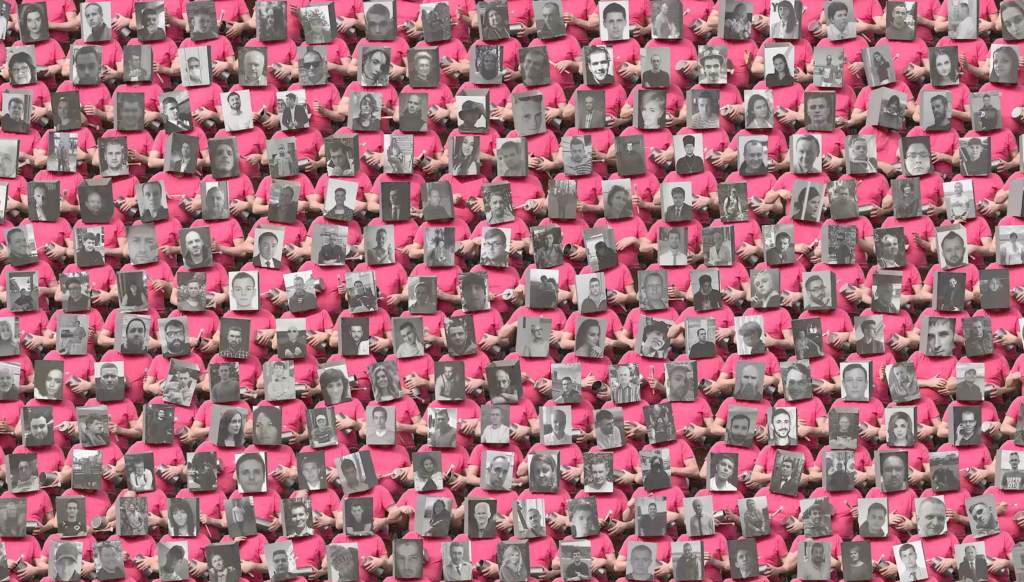Antonina Stebur is a researcher and curator. She is a co-founder of antiwarcoalition.art, The International Coalition of Cultural Workers in Solidarity with Ukraine. Her articles have appeared in ARTMargins, Art Review, Blok Magazine and elsewhere.
Volha Davydzik is a PhD Candidate at Leuphana University in Germany. Her research interests include biopolitics; feminism; anti-growth theory; the economics of care; post- and neocolonial studies; and forms of collectivity and solidarity. Her articles have appeared in ARTMagazine, Topos, Digital Icons and syg.ma.
On 24 June 2020, shortly before the Belarusian presidential elections, Minsk faced a water crisis that left residents without clean water for over two days—without official explanation. Eventually, it was revealed that the water had been unfit to drink or other uses, like bathing or cooking. Facing inaction by the authorities, Minsk residents formed solidarity networks, creating a care infrastructure in which locals brought water to those in need.
Simultaneously, a grassroots initiative led to the creation of an interactive online site that provided real-time updates on where in the district contaminated water was still being supplied and where clean water was now available. Through such simple, understandable mechanisms—which beneficiaries appreciated not as a direct political gesture, but as a practice of care—the immediate problem was addressed in a situation where the state had absented itself. Moreover, active communities formed, fostering a sense of agency and connection among the people.
This instance exemplifies the type of mutual aid that emerged in Belarus during the coronavirus pandemic, evolved during the protests, and continues in the aftermath of Russia's full-scale invasion of Ukraine. This case illuminates the key motifs and lines of solidarity and tension that emerged during the Belarusian protests and persist today. Among these, it is important to highlight three aspects. The first is a reckoning with the fragility and corporeality of human existence, which resulted in the formation of care as a political action. The second important element that emerged in this period is the horizontal and networked nature of the protests, which contrasts with the rigid, hierarchical structure of Lukashenko's regime. Finally, we may highlight the critical role of technology in facilitating the protest movement and building the aforementioned care infrastructures.
The digital environment has reshaped protest, enabling broader political participation through non-representative democratic tools and practices beyond street protests. Using networks and digital tools has also revealed that protest is not only about taking to the streets. Various protest-related practices create the possibility of inclusion, to the point that protest itself can be defined in terms of flow. Digital tools provide diverse, flexible ways to join resistance movements, ensuring greater inclusivity, mobility, and safety for more participants. However, technology is neither inherently neutral nor the unique province of protestors. The researcher Almira Ousmanova, for instance, has highlighted the state's active use of IT for repressive purposes.
However, technology within the protest movement has been crucial in organizing infrastructures of care to counteract Lukashenko's repressive regime. The tension between the fragility and vulnerability of the human body, on the one hand, and the repressive machinery of state power, on the other, became particularly pronounced after 2022. Russia's invasion of Ukraine and the Belarusian regime's decision to allow the Russian military to use its territory for deployment, movement, and military bases coincided with a surge in repressions inside Belarus. The country currently ranks among the top seven worldwide in terms of the number of political prisoners per capita—alongside China, Turkey, and Syria—with around 2000 recognized political prisoners. Reports of torture, rape, beatings of detainees, blackmail, and the death of 6 political prisoners while in state custody underscore the dire situation that has developed since 2020.
Furthermore, approximately 500,000 people were compelled to leave the nation, which accounts for over 5% of the total population. In today’s Belarus, then, violence is the most overt manifestation of state authority. Belarusian researchers have pointed to the slogan "power is made of black rubber" which reflects the government's reliance on force, as emblematic of its unethically hierarchical political structure, starting with the presidency. Inefficiencies in public administration and a top-down view of governance have produced a situation in which those in power view violence as the sole method of control. In contrast to classical views of the political subject as rational and disembodied, Belarusian political participation emphasizes corporeal experience, with fragility and vulnerability central to its essence, making them fundamental to the nature of political engagement.
The contrast between state violence and the physical vulnerability of protesters is stark, elevating fragility to a crucial political concept tied to the interdependence of all human beings. The result is a heightened need for supportive social and political structures that help individuals become active participants in the country’s political life. Technology is crucial to countering state violence with this vulnerability, shifting political practices to spaces of non-hierarchical interaction and decentralized decision-making. Digital tools and networks facilitate this modus operandi by fostering open, flexible, and horizontal political engagements, allowing for easy adaptation and change within political movements.
Technology has had a significant impact on the development of infrastructures of care, which are designed to support vulnerable people, promote solidarity, and resist state violence. Care has emerged as a key theme in the ongoing Belarusian protests. In her book The Revolution Has a Woman's Face: The Case of Belarus, Belarusian philosopher Olga Shparaga notes: "The violent denial of people's right to visibility placed their vulnerability, and subsequently their care for each other, at the center of resistance, allowing it to continue for several months."
Before the pandemic and protests, people perceived care either as a private matter or as a ruler's duty towards their subjects. However, technology has enabled society to build its own care infrastructures that bypass state mechanisms. These technology-driven initiatives foster new collectives and enhance solidarity, representing revolutionary shifts in societal organization and challenging traditional power structures. Built on principles of horizontal interaction and collaboration across diverse groups (businesses, IT, psychologists, NGOs, students), these infrastructures emphasize solidarity over competition, introducing a new paradigm of political engagement. This shift towards self-organization and collective support transforms the private into the political, questioning established hierarchies and redefining public sphere participation. Researcher Misha Gabowitsch notes that this lateralization of relationships set a specific tone for the Belarusian revolution by shifting the focus of political activity and decision-making from “up there” to the realm of the personal.
The infrastructures of care established in 2020 and 2021 still exist today. Some have shifted their focus to assisting not only Belarusians, but also Ukrainians, while others have become less visible, transforming into a “flickering” infrastructure of care. Despite severe repressions, care as a political action persists in Belarusian society, supported by advanced technologies. An example is the “We Care!” solidarity marathon, a fundraiser for Belarusian political prisoners and their families. The marathon was initiated by Volha Harbunova, a representative of the United Transitional Cabinet of Belarus, and lasted for two days from 29 to 30 July 2023, raising over 574,000 Euros. More than 9,000 people participated in the marathon, with the most common donation being 23.34 Euros—a reference to the administrative article under which many Belarusians were detained. This marathon demonstrates that political infrastructure, organized to provide care and support, continues to play a dominant role in Belarusian resistance and solidarity.
Care, often seen as marginalized labor, has gained broad reach in Belarusian communities through technology, facilitating participation in collective activities which, however, are not always recognized as political action. For instance, the development of a clean water delivery system, significantly aided by technology, was driven by empathy rather than political motives. While technology excels in supporting such initiatives, the challenge remains in transitioning caregivers into political actors who realize their actions as political and acknowledge their political agency.



